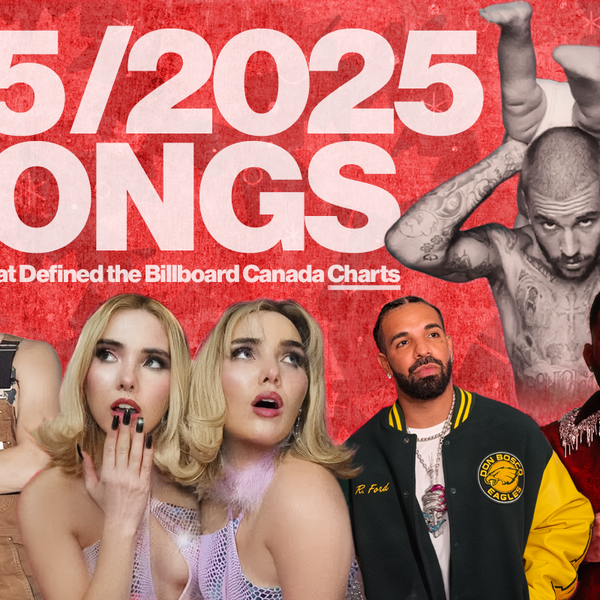Canada Ranked 8th Largest Global Music Market In New IFPI Report
Drake and The Weeknd were also ranked as the No. 4 and No. 5 biggest global artists in 2023, behind Taylor Swift, Seventeen and Stray Kids.
Canada’s recorded music revenues are strong, according to a new report from IFPI.
The IFPI's 2024 State of the Industry report takes a deep dive into the state of recorded music around the world, and ranks Canada eighth in terms of global music markets in 2023, maintaining the country's spot in the top ten. Canada's music market grew by 12.19% last year, reaching US$659.6 million in revenues. That growth outpaced both the U.S. market, which grew by 7.2%, and global growth of 10.2% — the second highest recorded global growth rate, according to the report.
Some individual Canadian artists did well on a global scale, too: the report ranks Drake and The Weeknd at No. 4 and No. 5, respectively, in its Global Artist 2023 chart, which considers artist, track, and album performance. Taylor Swift took the top spot there, followed by South Korean groups Seventeen and Stray Kids.
A statement from IFPI, which represents the global recording industry, and Music Canada, an association representing major Canadian labels, attributes much of Canada's revenue growth to streaming revenues, which jumped by 8.6% here, and subscription streaming in particular, which increased by 10.1%. The associations emphasize the challenges posed by streaming manipulation, highlighting IFPI's recent legal complaint against nine Canadian-based sites that sold fraudulent streams. The sites are now offline.
Beyond Canadian borders, IFPI's State of the Industry highlights how national markets are intertwined worldwide, using the growing popularity of Punjabi music in Canada and the launch of 91 North Records — a collaboration between Warner Music Canada and Warner Music India — as an example. "We set up 91 North Records," Warner's Simon Robson says, in "reaction to something that is happening organically and a proactive turbocharge to make sure it doesn’t just continue but flourishes and finds a wider audience." Robson points out that several of the most popular Indian songs in 2022 came from artists based in Canada.
Challenges for emerging artists
While Canada's revenue growth is positive news, the numbers don't indicate which artists might not be feeling the bump in numbers. Canadian music organizations like Re:Sound have been highlighting the economic challenges facing musicians in a landscape where touring costs are increasing and the digital landscape has transformed revenue opportunities. Most major streaming services have royalty models that translate to fractions of a cent per stream, making it challenging for many artists to receive more than pennies in royalties.
Spotify also released a major report this week, Loud and Clear, focused on streaming royalties from 2023. The report highlights that Spotify paid out $4.5 billion to indie-artist catalogues, and that 66,000 artists are generating at least $10K in royalties, with 11,600 generating $100K or more. The majority of those 66,000 are from countries where English is not the primary language. Spotify's royalty sharing model pays out royalties based on the size of a given artist's share of overall streams generated on the platform.
In the report, Spotify designates 225,000 of its music uploaders as emerging and professional artists, who depend on streaming royalties as part of their income. But some, like indie artist Damon K, have pointed out that this classification system devalues the labour and artistry of working musicians who aren't amassing streams.
In the U.S., organizations like the United Musicians and Allied Workers are working with representatives to promote the Living Wage for Musicians Act, which, if passed in Congress, would see that artists receive a penny per stream.
For more on global music revenues, check out the full IFPI State of the Industry report.


















